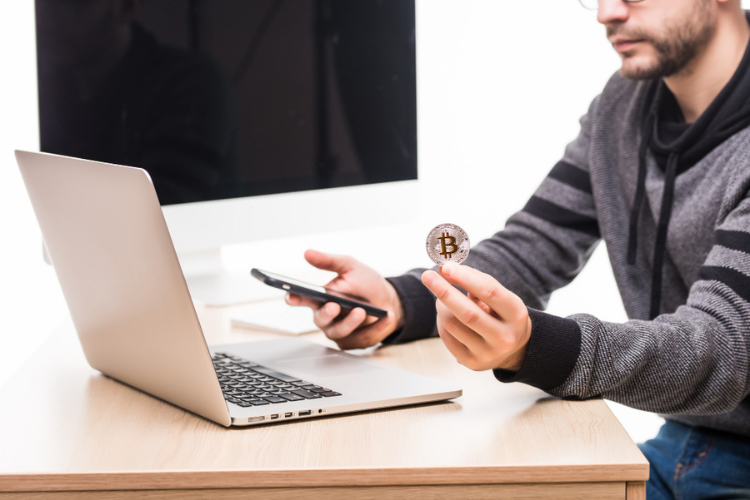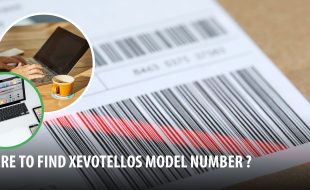Table Of Contents
- Why Crypto Payments Deserve a Spot in Your Checkout
- Lower Fees
- No Chargebacks
- Instant Global Reach
- New Customer Segments
- Cash-Flow Clarity
- Understanding the Basics: Wallets, Gateways, and Blockchains
- Choosing the Right Crypto Payments Gateway
- Currency Support
- Transparent Fees
- Compliance & Licensing
- Integration Effort
- Support & Uptime
- Spotlight on Crypto Acquiring
- A 5-Step Setup: Accepting Crypto by This Afternoon
- Create Your Merchant Account
- Generate API Keys or a Payment Link
- Set Conversion Rules
- Test Transactions
- Go Live & Train Your Team
- Managing Risk and Accounting Like a Pro
- Volatility Isn’t a Deal-Breaker
- Taxes and Reporting
- Security Hygiene
- Beyond One-Time Sales: Recurring Billing in Crypto
- Conclusion: Your Next Competitive Edge Is One Click Away
- Frequently Asked Questions from Fellow Entrepreneurs (FAQs)
A Beginner’s Guide to Accepting Crypto with a Payments Gateway
Remember the first time a customer asked if you took Apple Pay, and you had to scramble to figure it out? Crypto payments are approaching that same tipping point but faster. As of 2025, roughly 559 million people use some form of cryptocurrency, and about 15,000 merchants already take Bitcoin worldwide. For small and medium-sized businesses (SMBs) and e-commerce owners, that statistic isn’t a headline; it’s a flashing “opportunity” sign.
Accepting crypto isn’t about hopping on a hype train. It’s about tapping into a global customer base, shrinking fees, avoiding chargebacks, and future-proofing your checkout. Thanks to modern payment gateways, adding a “Pay with Bitcoin, Ethereum, or Solana” button can be as simple as pasting a snippet of code – no PhD in blockchain required. This guide walks you through the essentials with a conversational but no-nonsense tone, focusing on the steps, tools, and pitfalls that matter most to busy entrepreneurs.
Why Crypto Payments Deserve a Spot in Your Checkout
Traditional processors eat 2-5% of every sale, hold funds for days, and expose you to a nightmare of fraudulent chargebacks. Crypto flips that script:
Lower Fees
Blockchain settlement costs typically land between 0.1% and 1%. When margins are slim, shaving even one percent with the help of a crypto payments gateway is money in your pocket.
No Chargebacks
On-chain transactions are irreversible; fraudsters can’t file a bogus dispute six months later. According to Techradar, chargeback losses now cost merchants nearly $34 billion annually. Crypto sidesteps that leak entirely.
Instant Global Reach
Whether a shopper is in Berlin, Buenos Aires, or Bangalore, payment clears in minutes without FX markups.
New Customer Segments
Crypto owners are an engaged, high-spending demographic; think early adopters who like to brag about businesses that accept their coins.
Cash-Flow Clarity
Funds land as soon as the blockchain confirms, not “in 2-3 business days.”
For SMBs, those benefits translate to fatter margins, fewer headaches, and the sort of brand differentiation that sparks word-of-mouth buzz.
Understanding the Basics: Wallets, Gateways, and Blockchains
Before clicking “install plugin,” you need a 60-second vocabulary lesson.
- Wallet. Comparable to a bank account number plus a password in one. It stores your crypto addresses and private keys. For merchants, a payment gateway usually auto-generates wallet addresses under the hood, so you don’t manually handle keys.
- Blockchain. A public ledger where transactions are recorded. Each supported coin (Bitcoin, Ethereum, Solana, Tron, etc.) runs on its own chain.
- Payment Gateway. A service that sits between your storefront and multiple blockchains, translating an order total into crypto, generating an address or QR code, confirming payment, and optionally converting funds to fiat. Think “Stripe for crypto.”
- On-Ramp / Off-Ramp. Converting fiat to crypto (on-ramp) or crypto back to fiat (off-ramp). Some gateways bundle this.
With those concepts in place, the rest feels a lot like adding PayPal, just with extra currency options.
Choosing the Right Crypto Payments Gateway
Not all gateways play by the same rulebook. When you’re evaluating providers, keep five yardsticks in mind:
Currency Support
Today’s shoppers might pay in Bitcoin; tomorrow, they might want USDC on Arbitrum or SOL on Solana. Check that your gateway handles multiple chains and stablecoins to avoid locking yourself into yesterday’s tech.
Transparent Fees
Look for flat, published rates without setup or hidden maintenance charges. Bonus points if you can auto-convert to avoid volatility.
Compliance & Licensing
Know-Your-Business (KYB) and Anti-Money-Laundering (AML) rules still apply. Choose a provider with proper regulatory coverage in your operating regions.
Integration Effort
SMB owners wear ten hats; you don’t have weeks for custom development. Dashboards, plug-ins, no-code payment links, or a clear REST API are must-haves.
Support & Uptime
Crypto never sleeps, and neither should your gateway’s customer support.
Spotlight on Crypto Acquiring
Leading Crypto Acquiring ticks each of those boxes for 2025 merchants:
- Wide Currency Coverage: Bitcoin, Ethereum, Solana, Tron, Optimism, Arbitrum, and more.
- Straightforward Pricing: No surprise surcharges; fees remain lower than legacy gateways.
- Zero Chargebacks: Because blockchain.
- Compliance First: Fully licensed with robust KYB/AML and a recent cybersecurity audit.
- Easy Integration: A customizable widget or REST API with clear docs lets developers (or no-code founders) embed crypto checkout in hours, not weeks.
If you already juggle Stripe or PayPal, Inqud behaves similarly, only with crypto rails.
A 5-Step Setup: Accepting Crypto by This Afternoon
You don’t need to re-architect your tech stack. Follow these steps, and you can make your first on-chain sale before lunch.
Create Your Merchant Account
Sign up on the gateway’s dashboard, complete KYB verification (usually business registration docs plus a quick video selfie), and pick settlement preferences: crypto, fiat, or a mix.
Generate API Keys or a Payment Link
Developers can grab an API key and drop the widget into your checkout page. Non-coders can create a branded payment link: “Pay $49 in crypto.” The link handles currency conversion and confirmation automatically.
Set Conversion Rules
Volatility spooks new merchants, so most gateways allow auto-conversion. Example: receive any coin, but settle immediately in USDC or USD. Inqud’s Instant Exchange will sweep incoming funds to your chosen currency at market rates with a slim spread.
Test Transactions
Most dashboards offer a sandbox. Send $1 worth of crypto from your personal wallet to ensure that webhooks correctly update the order status. A single successful test screens out 90% of launch-day surprises.
Go Live & Train Your Team
Switch the production, refresh the FAQ pages, and inform the support reps how it is possible to see blockchain confirmations in the dashboard. A cheat sheet with “three most common customer questions” usually suffices.
Total time investment: 30 minutes if you’re technical, 90 minutes if you’re not.
Managing Risk and Accounting Like a Pro
Volatility Isn’t a Deal-Breaker
Price swings are the first objection accountants raise. The answer: instant conversion. You can quote customers in their chosen coin while your balance sheet only ever sees stablecoins or fiat. Choose conversion thresholds, say, every 15 minutes or when the wallet hits $500, to lock in revenue without absorbing daily swings.
Taxes and Reporting
Most countries now treat crypto income like any other revenue stream. That means you recognize the USD (or local currency) value at settlement. Gateways like Inqud export CSVs containing the timestamp, transaction hash, spot rate, and settlement amount; please provide these to your bookkeeper to complete the process. Always check jurisdiction-specific VAT or sales tax rules; they apply regardless of payment method.
Security Hygiene
Use hardware security modules (HSM) or multi-signature wallets for treasury funds, enable two-factor authentication on your gateway dashboard, and limit API keys to the specific actions required (e.g., “create invoice,” but not “withdraw”). Think of it like giving your developer restricted Stripe keys, same principle.
Beyond One-Time Sales: Recurring Billing in Crypto
Subscriptions no longer apply exclusively to SaaS giants, meal subscriptions, newsletters, maintenance, and even gyms in town are based on predictable income. A prior problem of Crypto was recurrent charges since wallets do not enable the form of payment that is a pull. In the present-day gateways, the paradigm turns around:
- Customer Approves a Payment Stream. They get a blockchain transaction signed, which enables them to have a monthly debit or deposit of a specified value.
- Gateway Triggers Each Period. Smart contracts or off-chain scheduling execute the payment without requiring the customer to revisit checkout.
- Merchant Receives Funds Instantly. Same no-chargeback, low-fee advantage.
Inqud’s Recurring Payments module wraps that logic into an API endpoint or dashboard toggle. Perfect for SaaS, content subscriptions, or any SMB tired of losing customers due to credit card declines.
Conclusion: Your Next Competitive Edge Is One Click Away
In 2025, there is no need to make a moonshot bet when it comes to accepting crypto payments; it is a low-effort upgrade that opens up your customer funnel, cuts down costs, and protects you against chargeback fraud. Even with turnkey acquiring, instant exchange, payment links, and subscription billing as close as you can get on a single roof, with gateways such as Inqud, you can finally charge a crypto strategy more quickly than your last sales-tax filing.
You don’t have to evangelize blockchain at dinner parties, but you should let customers pay how they want. In an economy where attention spans (and loyalty) are short, that extra payment button might be the reason a shopper chooses your store over a competitor’s. Future-proof your checkout now, and ride the next wave of commerce instead of watching it from the shoreline.
Frequently Asked Questions from Fellow Entrepreneurs (FAQs)
Speculation still exists, but 9.9% of the global online population now owns crypto, and many actively spend it, especially Gen Z and Millennials. Dismissing that audience means leaving money on the table.
Gateways generate unique deposit addresses that only accept supported currencies. If a customer sends an underpayment, the invoice stays “pending,” and they’re prompted to top up. Overpayments can auto-refund or credit the store balance.
No. A single invoice can display multiple options, BTC, ETH, and USDC, depending on your gateway’s settings. Customers choose and pay, and you receive a unified confirmation.
Yes, but only outbound from you. Simply issue a payout to the customer’s address. Because the chain is immutable, the risk of forced chargebacks is zero.
If you auto-convert to fiat, most gateways wire daily or on demand, similar to traditional processors, minus the rolling reserve many banks require.














